By Sara Sand
(B.S. HTC Engineering Physics, Class of 2017)
I spent ten weeks last summer in Germany at the University of Konstanz where I worked in the lab of physicist Lukas Schmidt-Mende and under the direction of Ph.D. student Julian Kalb.I was there as an intern with the DAAD, a German academic exchange agency. DAAD’s mission is to enable young academics and researchers from around the world to become leaders in the fields of science, culture, economics, and politics – as well as friends and partners of Germany.
While in Dr. Schmidt-Mende’s lab, I learned a lot about dye-sensitive solar cells and techniques for material science: spin-coating, electrospinning, optical lithography, Scanning Electron Microscopy (SEM), SEM, Atomic Force Microscopy (AFM), and electrical characterization methods.
I joined a team of researchers who want to better understand the undefined electronic properties of titanium dioxide. I was captivated not only by the unique methods of research at the German lab, but also by the international experiences presented during my trip, including working with physicists from Pakistan, India, Hong Kong, China, Korea, Japan, Canada, and several European countries.
Learning the Ropes Around the Lab
One challenge for me was simply becoming accustomed to the German lab culture and the way the lab functions. Each lab is unique, so it was eye-opening to see how other labs work. This lab had a highly organized régime, and a researcher was assigned responsibility for the functioning of every device. It was necessary to schedule a time to use the equipment and to attend lab meetings. We had key fobs that opened most of the labs, and our supervisors were very strict about keeping them locked.
Our lab had about 25 researchers, which meant we worked within a hierarchy: each undergraduate and master’s degree graduate student was supervised by a doctoral student, who in turn, answered to a post-doc who was supervised by the professor. Understanding the hierarchy and procedures just took some time; when in doubt it helped to ask a lot of questions.
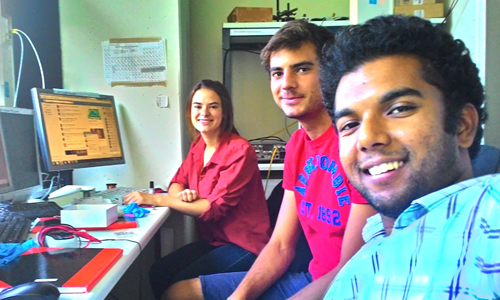
I spent most of my internship in the optics lab, working alongside fellow undergraduates Harsh (right) and Lukas (center).
On a typical weekday, I had a 30-minute walk to the lab and arrived about 9 a.m. I began the morning by taking a lot of measurements of different samples and worked on sputtering different materials. I joined the larger lab group to eat lunch at their cafeteria. I was assigned to work alongside two undergraduates: Harsh, from India, and Lukas, from Germany. We had great conversations in between conducting our tasks. I left the lab around 5 p.m. and walked home and ate dinner. I spent the evenings either planning weekend trips or relaxing by the lake with friends.
Taking the Opportunity to See the World
One weekend I went camping in the mountains of Bavaria, which was incredibly beautiful. I also had the opportunity on weekends to travel to Paris, Milan, and Berlin. In Konstanz, I could even travel to Switzerland by foot from my residence.
The DAAD internship was a really great experience and solidified what area of research I want to pursue.
I’m really interested in studying solar energy, particularly dye-sensitive or organic solar cells. They offer a rare opportunity to create very inexpensive solar cells. I hope to return to Konstanz after graduation to spend a year doing research there.
Sharing Culture and Experiences
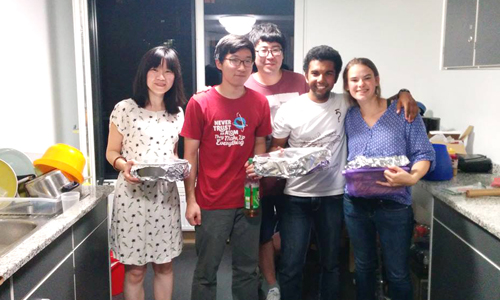
Each new member of the lab had to make a cake for everyone. Many of us didn’t have a lot of cooking supplies, so Yuyi Feng, a doctoral student from China (left), invited us to her apartment to bake. I made chocolate chip cookies.
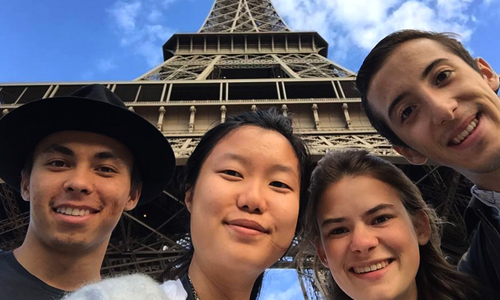
One weekend included an adventure to Paris, France. L to R: Daniel Derkach (Canada), Stephanie Tran (Canada), me, Luis Valencia (USA).
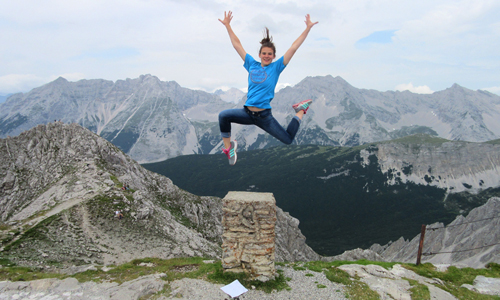
Innsbruck, Austria is about 6 hours away by bus from Konstanz. The view was absolutely beautiful at the higher elevations.
Sara Sand – Intern under the direction of Dr. Lukas Schmidt-Mende, Professor in the Department of Physics, University of Konstanz, Germany – junior at Ohio University – Honors Tutorial College – engineering physics major
During the summer 2016, Sand is working at the NOAA Earth Systems Research Laboratory in Boulder, CO, as part of a Hollings Scholarship.


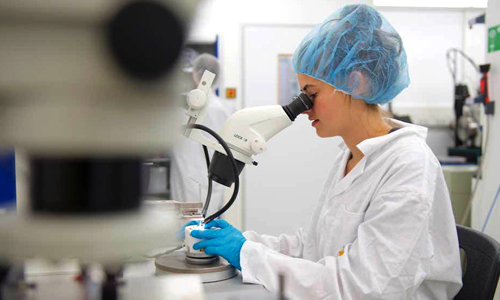
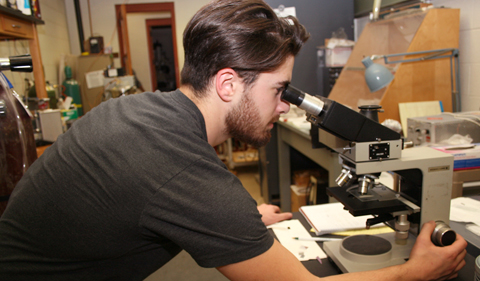
















Comments